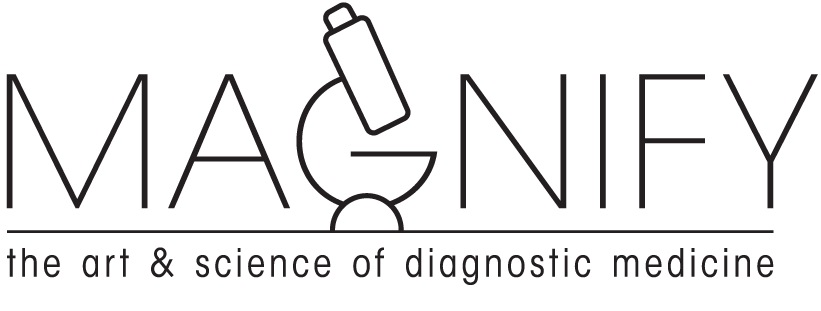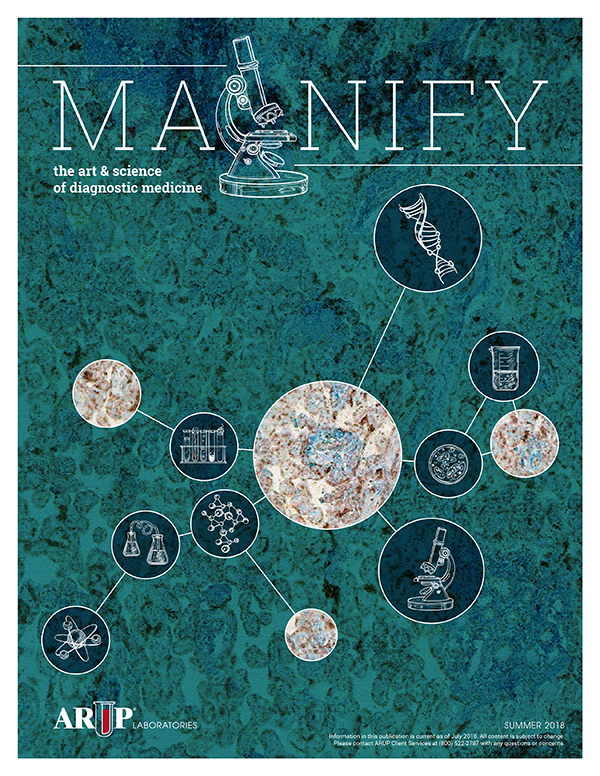New Codirectors of ARUP Institute for Clinical and Experimental Pathology® Bring Complementary Experience and Knowledge to the Role
Devin Close, PhD, and Marc Elgort, PhD, have crossed paths more than once during their professional careers. Both worked on their graduate studies at the University of Utah in the same time frame, and both began working at ARUP Laboratories as scientists in Research and Development in 2015. They were both drawn to Utah, in part, by their love of rock climbing and the outdoors.
Now they are codirecting ARUP’s Institute for Clinical and Experimental Pathology® (R&D) following the retirement of former director Mark Astill, MS, which was effective January 7, 2022. Both Close and Elgort are excited to lead R&D during a time of technologic advancement.
“We have great momentum, and we look forward to being part of the evolution of laboratories as they move into this new generation of testing, including the shift toward molecular approaches with technology such as next generation sequencing (NGS),” Close said.
“With advancing technology comes a lot of facility. Utilizing new technologies gives us the ability to do more faster, and to do it more simply,” Elgort said. “Advanced technology potentially increases our ability to look at analytes we’ve never been able to before, and that’s ridiculously important for patient care.”
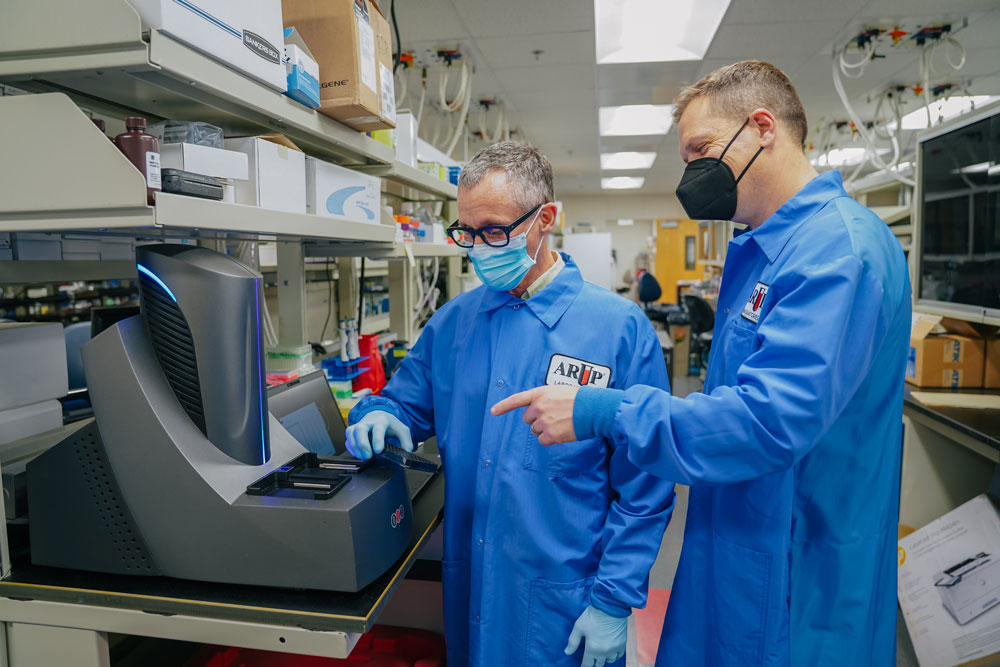
Close and Elgort plan to build on the momentum in R&D that began with predecessors such as Astill and Adam Barker, PhD, another former director of R&D who is now chief scientific officer, leads the New Technologies Group, and serves as a medical director. Although R&D’s primary focus will continue to be the development of new tests through established and proven R&D processes, a growing focus will involve developing partnerships with outside technology companies. Through these partnerships, R&D will be able to investigate the applications of innovative technologies that could improve the speed, efficiency, and accuracy of diagnostic testing, as well as open new doors to improve understanding of disease pathologies.
“These partnerships herald a big change in the mindset of ARUP and speak to our greater mission,” Elgort said, referring to ARUP’s dedication to contributing to scientific knowledge and advancing the field of laboratory medicine. “But advancing those technologies will ultimately benefit what we do in the reference business.”
For larger initiatives, including those that involve incorporating new technologies, Close and Elgort will focus on developing multidisciplinary R&D teams by platform and methodology, enabling scientists who have varied backgrounds and who represent different fields to collaborate in new ways as they develop and validate tests.
“The challenge we face in the new world as ARUP becomes larger and we deal with more volume is this: How do we take these interesting new technologies and make sure the laboratory can run at scale? Moving to platform-based approaches allows us to merge to bring on tests in an efficient, scalable way,” Close said.
Close and Elgort said they look forward to launching several major test developments later this year, including whole genome sequencing to rapidly diagnose severe genetic disorders in newborns. They also plan to introduce a new platform that will allow ARUP to test higher volumes of antidrug antibody tests that aid in monitoring patients’ responses to treatment.
Perspective That Spans 40 Years of the Biotech Evolution
Although Close and Elgort may have landed in the same position, their career paths have followed different trajectories.
Elgort has witnessed the evolution of molecular biology from the early days of the biotech explosion in the 1980s. As an undergraduate at the University of California, San Diego, Elgort did research in bacteriology, focusing on primordial phosphorylation signaling at a time when the field was still in its early stages and many of the tools and techniques used today were unavailable.
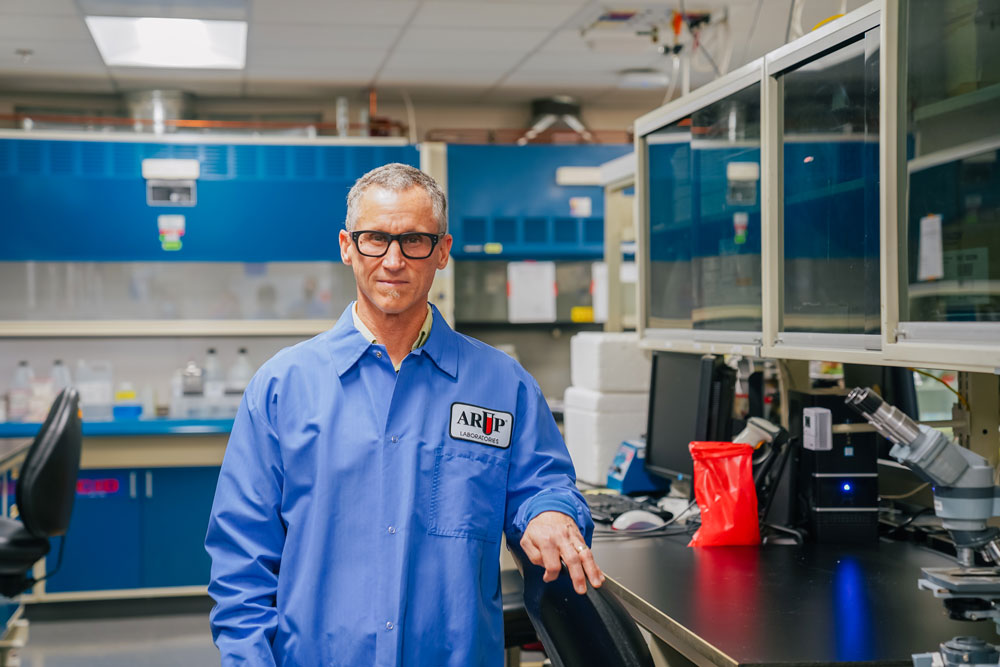
“We were trying to understand the differences between bacterial species at a more genetic, molecular level. At the time, Sanger sequencing was an emerging research tool. Cloning wasn’t trivial; nothing was trivial,” Elgort said.
From his undergraduate studies, Elgort worked his way through several labs as well as biotech and pharmaceutical companies, and he even taught high school for a time in Los Angeles, garnering an eclectic perspective on many aspects of biology.
While working as a research associate at the University of California, Los Angeles (UCLA), Elgort spent time in a kinetoplastid protozoan lab studying transcriptional regulation mechanisms in Leishmania and Trypanosoma. The lab was also developing polymerase chain reaction (PCR) methods to identify differences between old world and new world Leishmania species, and interest was quite high because at that time, in the early 1990s, soldiers were returning from the Gulf War with leishmaniasis, a disease caused by Leishmania.
Following his experiences at UCLA, Elgort moved to Ligand Pharmaceuticals, where he became involved in research on nuclear hormone receptors.
“Ultimately, the research we did to understand how compounds that we were developing (ligands) affected nuclear hormone receptors’ abilities to modulate transcription through recruitment of coactivators and corepressors essentially provided the basis for the concept of chromatin remodeling,” Elgort said.
Chromatin remodeling has implications in cancer, as aberrations in the remodeling machinery can lead to corruption of gene expression, leading to the development and propagation of cancer cells.
Elgort eventually moved to Salt Lake City. He completed his PhD in oncologic sciences at the U and began working at ARUP in 2015, the same year Close, whom he knew from his graduate studies, joined ARUP. In time, Elgort transitioned into the newly formed NGS group, where he began to work directly with Close on developing NGS tests.
“I have worked in a lot of places with many bosses. Mark Astill and Devin Close are two of the most solid bosses I’ve ever had. I have a tremendous amount of respect for [Close’s] ability to work in this capacity,” Elgort said.
Elgort’s unique perspective on the history of research and laboratory techniques, particularly in molecular biology and biochemistry, lends a depth of experience that will be invaluable to his leadership in R&D.
An Engineer at Heart and Now Key Leader
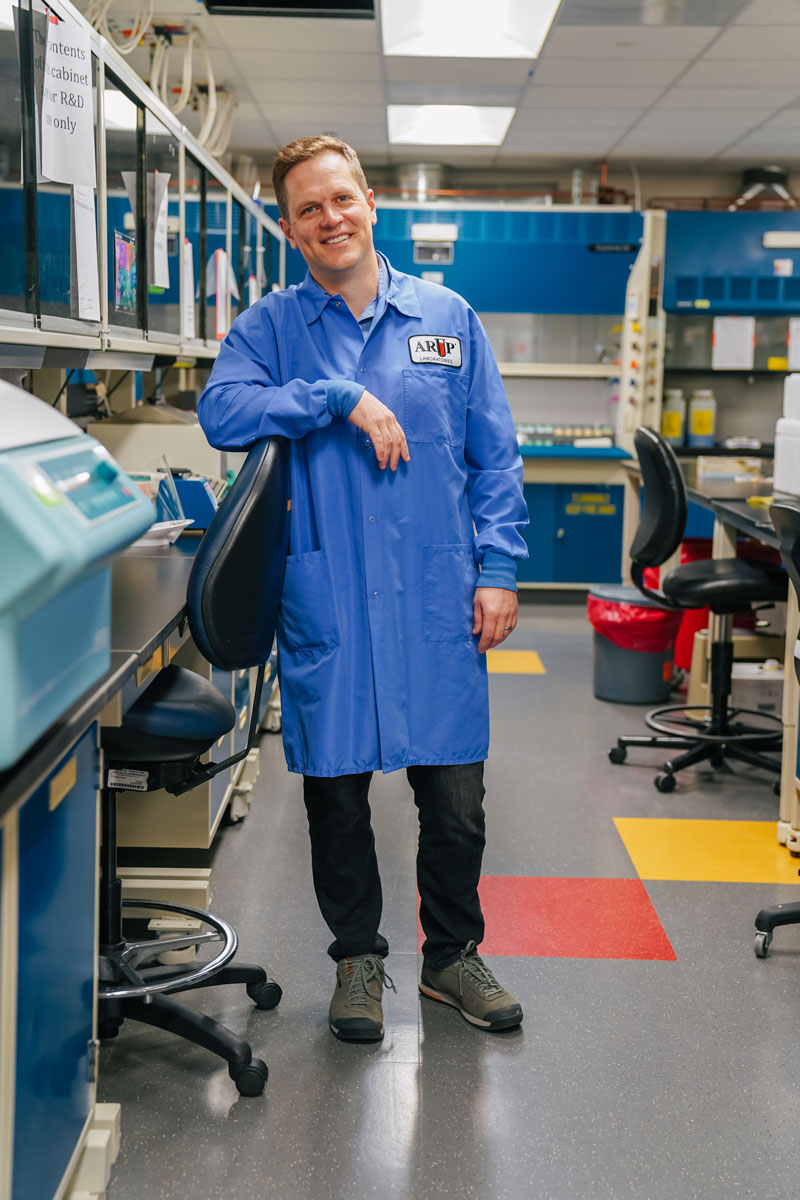
In contrast to Elgort’s experience, Close has followed a more linear pathway. He completed his PhD in structural biology and biochemistry at the U in 2008. Then he continued his research as a postdoctoral associate at Los Alamos National Laboratory, where he began to develop an interest in protein engineering, specifically in designing proteins to perform new tasks.
“I’m somewhat of an engineer at heart, and I love the thought of these naturally developed machines that do amazing work. It just fascinates me that a disordered ball of amino acids drives everything that happens in biology and in the world,” Close said.
Close was part of several projects at Los Alamos National Laboratory that involved structural biology and engineering of fluorescent proteins, synthetic antibodies, and biologic materials, which resulted in multiple publications and patents.
Following his experiences at Los Alamos National Laboratory, Close joined ARUP in 2015 as an R&D scientist. In this position, he played a significant role in the development of NGS at ARUP, and he later became the scientific manager of the R&D Genomics Massively Parallel Sequencing (MPS) group, which focuses primarily on test development and research for tests that use NGS technology.
Close has managed the R&D team and worked in close collaboration with other ARUP teams in developing uber panels, which utilize a single workflow process to analyze a comprehensive array of genes. Then the teams customize the reported panel results based on clinical indications and the individual patient scenario.
“We’ve been able to validate and bring on these very large-scale, panel-based tests that we can now translate into other tests. By using a single, uber workflow that can then be expanded into hundreds of workflows, we’ve introduced a new scalability factor,” Close said.
Overall, Close has made significant contributions to the scientific body of knowledge regarding protein and protein complexes that operate in transcription and chromatin modification, protein engineering, and molecular diagnostics.
Changing of the Guard
Close and Elgort’s leadership will follow the example set by Astill, the previous R&D director who has been an integral part of R&D since its founding 25 years ago and has mentored both Close and Elgort in their previous roles.
“It says something that it requires two of us to replace one Mark [Astill]. He’s an institution and deserves a ton of credit for making R&D what it is today,” Close said.
“There are a million things we could say, but as someone who has followed his lead, I’d describe Mark as a very compassionate leader—he’s somehow able to balance the challenges while always putting people first,” Elgort said.
Close and Elgort both expressed their confidence in each other’s abilities and in working together.
“Marc and I have a great deal of trust in one another. Marc is one of the smartest people I’ve ever met about everything science,” Close said. “Marc and I really enjoy our teams and our joy is advancing science through research, but also the creative scope of combining the operational approaches with newer science to build tests.”
“Individually, Devin Close and Marc Elgort bring a tremendous depth of knowledge, experience, and leadership to R&D, but combined, their skill sets will be a powerful driving force to advance ARUP and R&D into the future,” Barker said.

